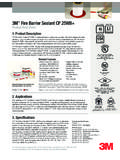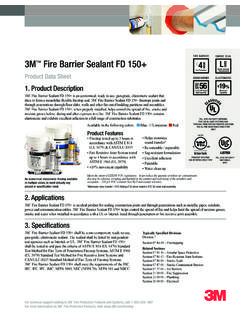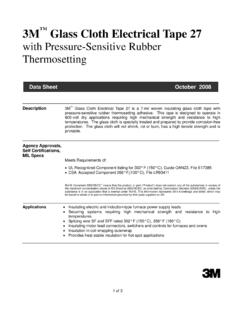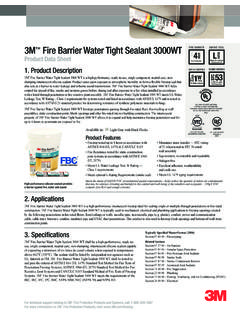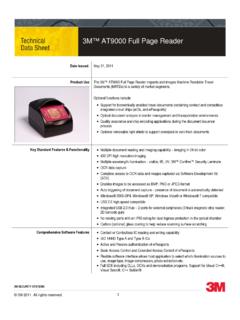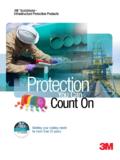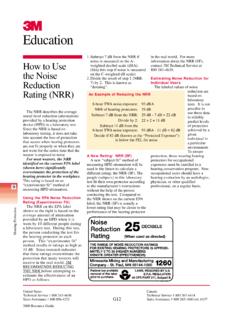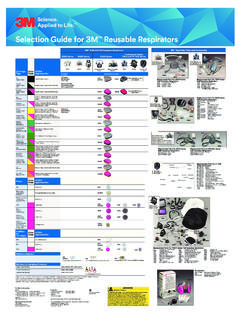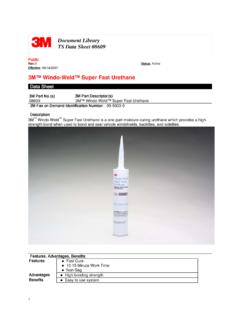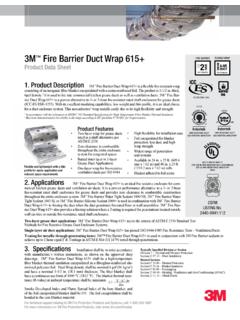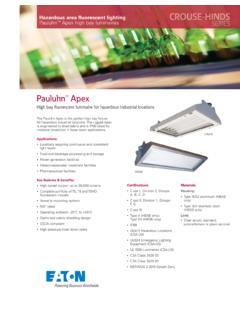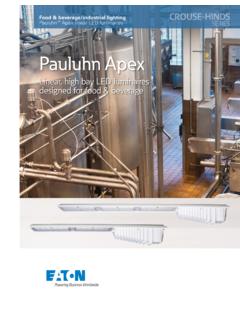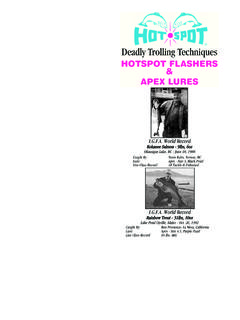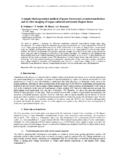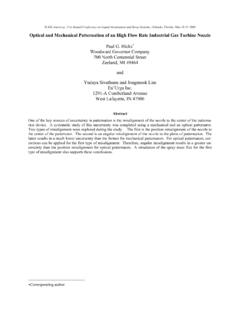Transcription of 3M Head Protection Hard Hats 101
1 3M Head Protection hard hats 101 2010 3M Company. 3M is a trademark of 3M Company, used under license in rights reserved.. This document provides basic information on hard hat use, testing and standards compliance. In all cases a risk/hazard assessment should be carried out and use limitations considered to ascertain the Protection required. The main function and purpose for wearing a protective hard hat is to: 1. Help protect workers from head trauma due to small objects falling from above 2. Help prevent force from transmitting down the spine if an impact from above occurs 3.
2 Help protect from low level electrical shock (Applies only to hard hats that meet ANSI/ISEA Type I, Class G and E.) How does the hard hat protect workers from each hazard? Hazard Provides Protection Head trauma from small falling objects hard outer shell usually made from HDPE (High-Density Polyethylene), ABS (Acrylonitrile Butadiene Styrene) or other Thermoplastic material. Force transmission down the spine from impact Inner suspension that is attached to the shell reduces forces that would otherwise be transmitted to the head and spine Low level electrical shock hard outer shell. The homogeneous material insulates against low level electrical shock.
3 Not all hard hats provide electrical Protection . Always review the hard hat user instructions and warnings to evaluate electrical Protection . Typical applications for the hard hats , when used with other appropriate PPE include: Construction work Heavy and light industrial Petrochemical Mining Road construction Forestry Utilities In all cases a risk/hazard assessment should be carried out and use limitations considered to ascertain the Protection required. 3M Head Protection Page 2 of 6 hard hats 101 2010 3M Company. All rights reserved. 3M is a trademark of 3M Company, used under license in Canada.
4 Compliance Standards Test Compliance to the ANSI/ISEA Standard Force Transmission Helmets shall not transmit a force to the test head form that exceeds 4450 N (1000 lbs). Maximum transmitted force of each individual test sample shall be averaged. The averaged values shall not exceed 3780 N (850 lbs). Apex Penetration The penetrator shall not make contact with the top of the head form. Flammability No flame shall be visible 5 seconds after removal of the test flame. Class C Class C helmets are not tested for electrical insulation. Class G (Electrical) Shall withstand 2200 volts (root mean square), AC, 60 Hertz, for 1 minute.
5 Leakage shall not exceed 3 milliamperes. Class E (Electrical) Must first pass the Force Transmission Test. Shall withstand 20,000 volts (root mean square), AC, 60 Hertz, for 3 minutes. Leakage shall not exceed 9 milliamperes. At 30,000 volts, the test sample shall not burn through. ANSI/ISEA Overview Establishes the minimum performance requirements for protective helmets that reduce the forces of impact and penetration and that may provide Protection from electrical shock. Impact Type Type I: Intended to reduce force of impact from blow to top of the head Type II: Intended to reduce force of impact from blow to top or sides of the head Electrical Classes Class C (Conductive) Not intended to provide Protection against contact with electrical hazards Class G (General) Reduce the danger of contact with low voltage conductors Proof-tested at 2,200 volts Class E (Electrical) Reduce the danger of contact with higher voltage conductors Proof-tested at 20,000 volts 3M Head Protection Page 3 of 6 hard hats 101 2010 3M Company.
6 All rights reserved. 3M is a trademark of 3M Company, used under license in Canada. Test Type Summary of ANSI/ISEA hard Hat Testing Guidelines Force Transmission (Individual tests / Average) Impactor shall have a mass of 8 lbs. Striking face of impactor shall be spherical with radius of inches Impactor shall remain rigid upon impact Impactor shall be dropped from a height that yields an impact velocity of 18 ft/s. ( mph) Apex Penetration (Pass / Fail) Penetrator shall have a mass of lbs., with a steel tip, a 60 degree included angle and a spherical tip radius of inches.
7 Penetrator shall remain rigid upon impact. Penetrator shall be guided and electrically insulated from metal head form. Penetrator shall be dropped from a height that yields an impact velocity of 23 ft/s ( mph) Flammability (Pass / Fail) Bunsen burner is adjusted to produce a inch blue flame with an inner cone of inch. The temperature of the flame at the tip of the inner cone shall be 1472 1652 degrees F. The flame shall be applied so the inner cone is within inches from the helmet surface. The flame is applied for 5 seconds. The sample is inspected for any visible flame, 5 seconds after removal of the test flame.
8 ANSI/ISEA Test Guidelines Total number of hats for protocol: 30 All testing shall be performed at room temperature ( F, 23 C) Hot test samples shall be placed in forced air circulating oven maintained at 120 F ( C) for at least two hours. Cold test samples shall be placed in an environmental chamber maintained at 0 F ( C) for at least two hours. Low Temp test samples shall be placed in an environmental chamber maintained at a temperature of -22 F (-30 C) for at least four hours. All hot, cold and low-temp samples shall be tested for impact and penetration within 30 seconds after removal from the conditioned environment.
9 3M Head Protection Page 4 of 6 hard hats 101 2010 3M Company. All rights reserved. 3M is a trademark of 3M Company, used under license in Canada. Optional Testing Requirements for ANSI/ISEA Requirement Test Designation on Warning Label Reverse Wearing Pass the force transmission test when mounted in the reveres position on the test head form. Low Temperature Test samples placed in environmental chamber maintained at -22 F (-30 C) for at least four hours and then tested to the impact and penetration test requirements. LT High-Visibility hard hat demonstrates chromaticity that lies within one of the areas defined within Table 1 of the ANSI/ISEA standard.
10 (Fluorescent yellow-green, Fluorescent orange-red, Fluorescent red) HV Replacement Recommendations hard hat should be immediately replaced if subjected to impact. 3M recommends the wearer replace the hard hat suspension at least every twelve months and the hard hat shell at least every two to five years depending on work environment. Inspect the hard hat, including the suspension and shell, prior to each use. Replace at first sign of wear. Refer to user instructions for proper installation and replacement of the suspension. hard Hat Inspection A hard hat shell should be inspected prior to each use.
